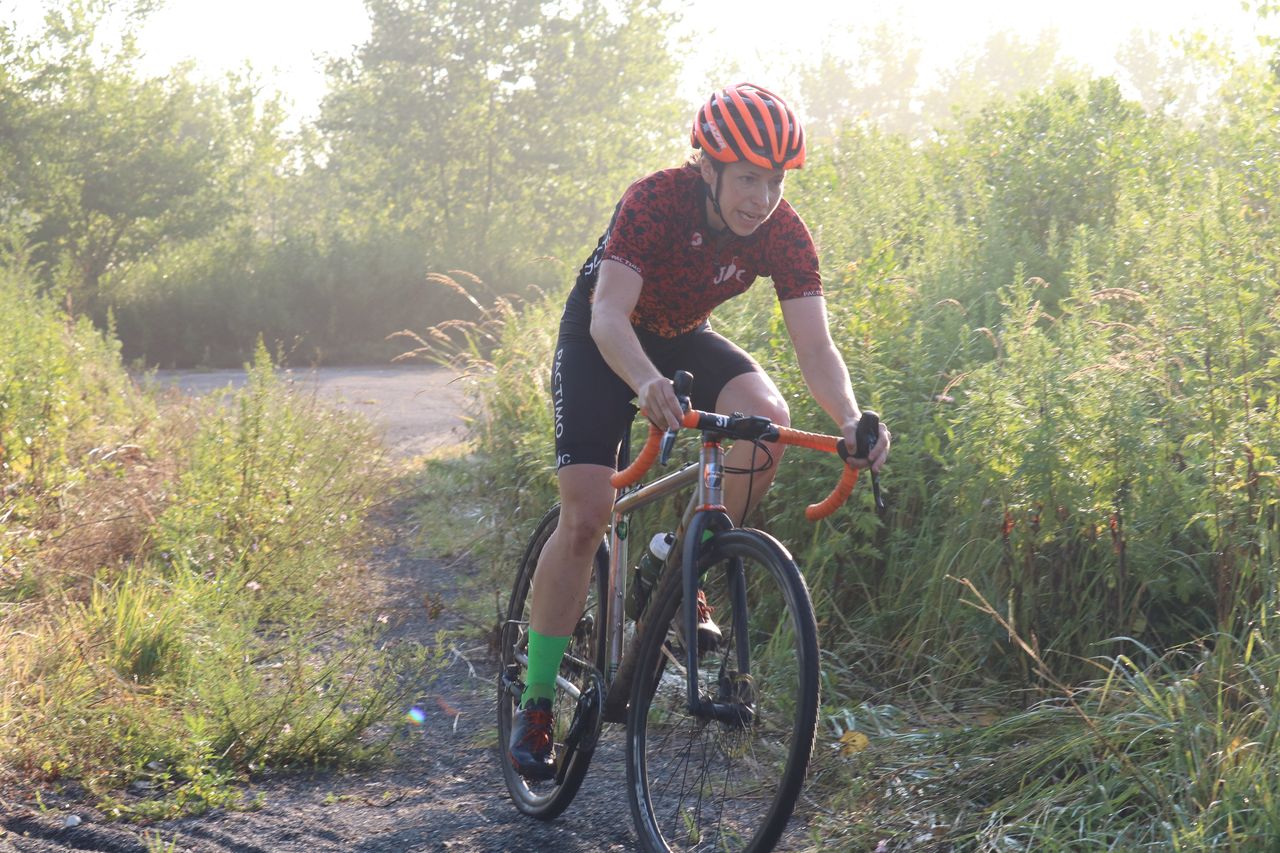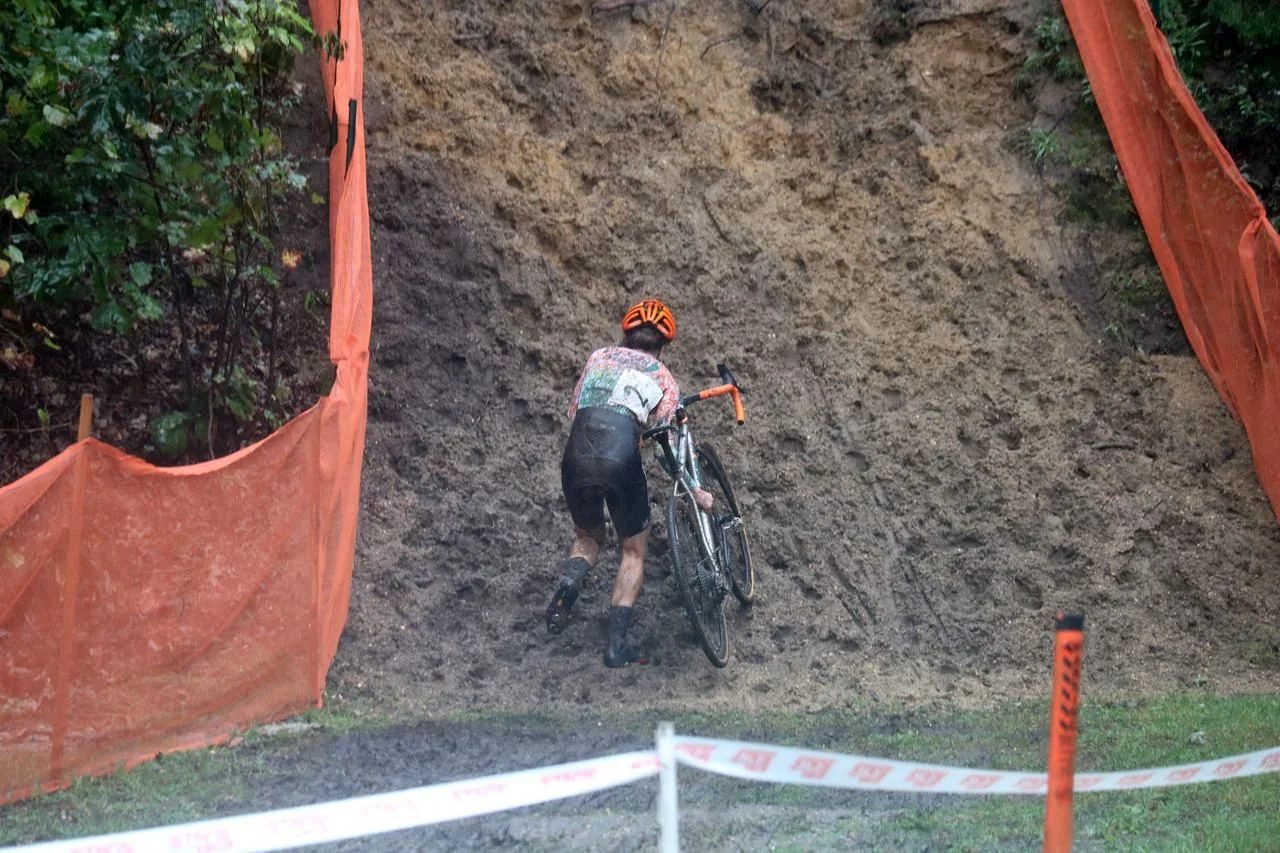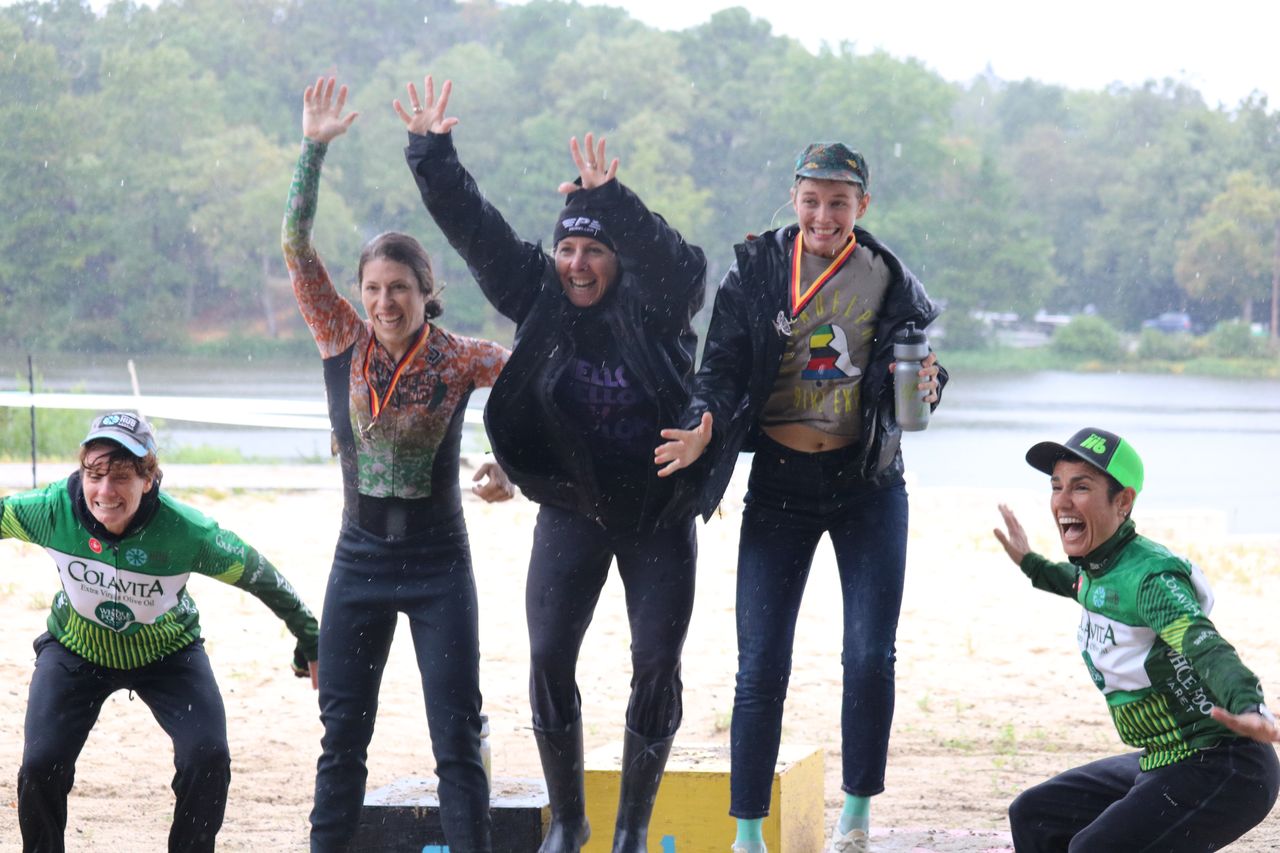Bridgeton Cross, formerly Beacon Cross, is an iconic New Jersey cyclocross race held at the southern tip to the state. Between a wicked run up, heart-pummeling beach runs, and get-lost-in-the-woods tracks, it is a race not to miss. The Jalapeno Cycling team ventured down last weekend. Both Kate and Andrew have offered their race reports below. All photos by Andrew Reimann/Jalapeno Cycling
Kathryn Cumming’s Race Report:
I got the hole shot!!!
After Nittany Lion, I was really focused on improving my starts. I spent a significant amount of time in the off-season working on all aspects of my top end power, from strength to speed, from five second power to one minute power. I improved and have enjoyed using this power around the course. I’m accelerating faster and gapping riders on short straightaways.
My starts, however, have needed more than just power. UCI cyclocross starts are chaotic and aggressive. There is a battle for position and with precious points on the line, everyone is eager to get the upper hand. If you leave an opening because you’re being “safe,” someone will take it. That is smart racing, and while I sometimes back down and settle in, I’m excited to get in the mix a bit more at the starts.
Last Sunday the New Jersey Cyclocross Cup kicked off with Bridgeton Cross. Bridgeton has one of the best courses around for racers. The promoters manage to connect some crazy run ups and a beach to wooded double track. The course rides heavy and while it is technical, there’s still plenty of room to pass.
This race offered the perfect opportunity to work on my start. A long, paved prologue followed by a wet corner offered a start that mimicked a UCI race. With some great competition toeing the line (we are fortunate to have a stacked lineup at local races), I wanted to attack from the whistle and be at the front around the first corner. From there, the rest of the race would be about enjoying the fun course.
Mission accomplished! I got off the line first and held my advantage into the dirt. Once we were in the woods, I was passed and lap one was a back and forth battle. After we started the second lap, I opened up a gap and was sitting in first, but Laura Van Gilder was on fire. She looked like she was cruising on dry pavement when she passed me towards the end of lap two (I think, races blend together a bit for me) and the gap just continued to open.
I worked my way around the course, enjoying the turns, running, and trying to embrace how heavy my legs felt. It was enough to roll in for second.
It was a perfect day to improve your handling skills. Grit was causing brake pads to fail all over the course, which meant you had to plan your lines, make good decisions, and stay relaxed. It was important to pedal through the slick sections and avoid oversteering. I was caught fish tailing more than once, but was pleased that all of my time on the trails has me feeling composed in these situations.
For me, local races are treated like practice. I focus on one key aspect of the race and other than that just enjoy the ride. Cyclocross racing takes significant energy and it is tough to push yourself to the limit every weekend. The details really do make a difference, but there is only so much time you can put in to prepping bikes, food, and clothing. Local races offer a chance to go out to dinner the night before and throw a bike on the hitch rack in the morning with the same relaxed nature as if you’re heading out for a training ride.
On Sunday, this approach offered the added “benefit” of my lacking mud tires on a slip and slide kind of day. Between deteriorating brake pads and a lack of traction, I definitely learned a thing or two about line choice and maintaining forward momentum.
If you raced on Sunday afternoon, you got a taste of what racing in Europe feels like. My experience there is incredibly limited, but the courses are heavy, you’re running a lot, and you pretty much feel like your legs have been weighted with cinder blocks. We are lucky to have such a great course right here in NJ!
Andrew Reimann’s Race Report:
Last year at Bridgeton Cross was a bit bittersweet for me. My fitness and technical prowess weren’t anywhere close to where they are now, but I gave everything to keep away from being lapped by Philly’s UCI male cyclocross hero, Dan Chabanov. I barely made my goal, crossing the finish line just before Dan turned on to the finishing pavement for his final sprint. Because I was so close to being lapped, the USAC officials opted to pull me from riding my final lap anyway. I was plenty bummed not to get my full hour-plus race in.
This summer, I trained my threshold far more than my high-end power. Fresh sprinting has always come natural to me, but maintaining power and recovering from loads of lactic acid surges are not my strong suit.
Kate helped me put together a training program leading up to the cyclocross season to train my weaknesses. I also opted to take the Alec Donahue/Scott Smith approach, and train all summer on 32mm road tires off-road.
I’m not suddenly at the front of every Elite race, and I’m not foolish enough to think that gains come that quickly, but I could feel that the training more than paid off this year at Bridgeton. I was able to fight my way up the pack at the start. It wasn’t anywhere close to Kate’s holeshot, but I slotted into sixth after the prologue.
Then came the corners. They were an absolute joy. I felt almost spoiled getting to grip around those muddy Bridgeton corners with a meaty tread rather than the slicks I was used to. Both the tight course and getting pummeled with rain meant that the pack split up fully in the second lap, and everyone was doing their own time trial in the woods with other riders barely in sight.
I was really having fun in the woods. I completely ignored that stupid voice that comes on in the middle of a cyclocross race, telling you that you’re falling behind, or that it would be easier just to pull off and create some excuse for the bad showing.
Still, I figured that people were pulling out behind me, and it was inevitable for the leaders to come around and almost lap me like last year. I just made peace with it, and tried to perfect every corner. There was a downhill hairpin into a flat back section where I was dabbing a foot and taking off much faster than I would have been trying to ride it. There were a few sections I experimented with, seeing if I could intentionally fishtail my back tire around tight corners.
Instead of worrying about getting lapped, I was just trying to have the best ride I could, finding an overwhelming sense of calmness in the chaos of the mud and cheering.
By the time I finally finished seven laps, I raised my hand to the promoters, and thanked them for letting me finish the last lap instead of pulling me. I got a few raised eyebrows, and the promoter started laughing and joking around.
I didn’t realize until soon after that I had finished more than comfortably ahead of getting lapped. Pulling me wasn’t even in question. I had split a proper Mid-Atlantic Elite field in half for the first time in my life.
As one of the co-owners of Jalapeno Cycling, I should reiterate that we are the exclusive New Jersey dealer of Sage Titanium bikes, so obviously I have a bias (added to this is that Kate is the exclusive UCI rider on Sage Titanium Bikes). However, I would be remiss in not mentioning that I was able to take out the shop’s Sage PDXCX demo bike for this race. Its back-end tracked those tight corners insanely well, and descending singletrack is a dream on that machine. We do have several demo sizes in stock that we are happy to bring along with us, so be sure to reach out to me by email if you are looking to see how West Coast titanium rides out here!









